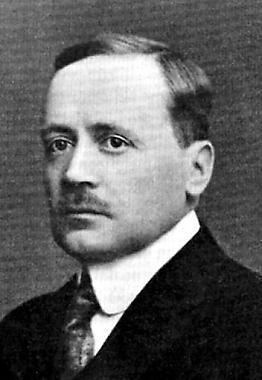Board member of Ab Wärtsilä OyHOP | Years of service 1896–1898 | |
 | ||
Parent(s) Carl Julius Stjernvall andMaria née Jakovlev Education Mechanical Engineering (1900) Political party | ||
Julius Stjernvall (26 October 1874 – 6 May 1939) was a Finnish engineer, businessman and vuorineuvos.
Contents
Stjernvall worked as manager in Finnish branch of Siemens & Halske 1904–1914 and subsequently in Kone ja Silta until 1929; the company grew during his time through new products and acquisitions. He was Minister of Trade and Industry in the short-lived Lauri Ingman's cabinet in 1918–1919.
Early life and studies
Stjernvall's parents were colonel Carl Julius Stjernvall and Maria née Jakovlev. He graduated from Finnish Cadet School in Hamina in 1896. During his studies he served as ensign in 132nd Bender Infantry Regiment. He was later promoted lieutenant in 1907 when he was already in reserve. Stjernvall continued his studies in Polytechnic Institute in Helsinki and graduated in 1900 as Mechanical Engineer.
Career
During 1904–1914 Stjernvall led technical office of Siemens & Halske in Helsinki; in this period the company built the first steam turbine power plant of Finland in Tampere and connected Sveaborg to electrical grid through an undersea cable. Stjernvall represented nobility and chivalry in Diet of Finland in 1904–1905. In 1914, shortly before the First World War Stjernvall moved to Kone- ja Siltarakennus (Kone ja Silta) as Deputy Director. Due to intense arms race between the European superpowers prior the war, the company had a good order backlog from the Russian military; Kone ja Silta produced munition and other military supplies, and repaired ships of the Imperial Russian Navy. Stjernvall became company manager in 1917. In the same year Finland became independent. In 1918 Swedish People's Party of Finland asked him to join in Lauri Ingman's cabinet as Minister of Trade and Industry. Stjernvall agreed, but the cabinet turned out to be short-living, and already after few months, he was back.
Kone ja Silta grew strongly during Stjernvall's time. In 1923 the company started producing Abloy locks, and took over Hietalahti Shipyard and Engineering Works in 1926. In 1928–1929 the company turnover reached 90 million marks and made 3 million marks' profit. At the time Kone ja Silta employed 1 300 people.
Stjernvall was entitled vuorineuvos in 1924.
At the end of 1929 Stjernvall submitted his resignation to Kone ja Silta for health reasons.
After his resignation, Stjernvall continued in positions of trust in Helsingin Osakepankki (HOP). Between 1918 and 1939 Stjernvall was twice the chairman of the Board.
Private life and tribute
Stjernvall had no family. A street was named after him, Stjernvallintie in Kulosaari, until it was renamed Vuorineuvoksentie in 1958.
